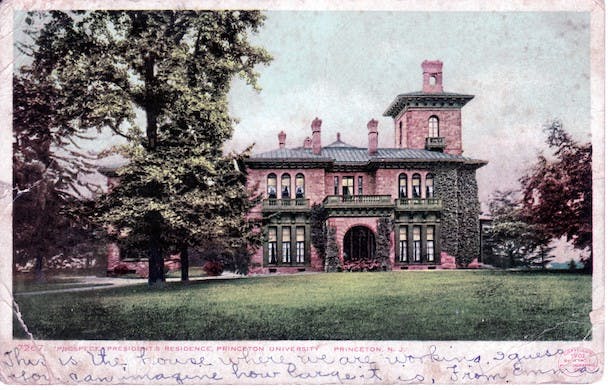Postcards From the Edge of History
Learning about the heyday of American postcard collecting (1901-1916), Faith Mitchell notes, is one way to recover the African American experience that has otherwise been barely recorded.

‘Emma’s Postcard Album: Black Lives in the Early Twentieth Century’
By Faith Mitchell
University Press of Mississippi, 240 pages
The publisher calls this book a “microhistory of the African American experience in early twentieth-century America through the correspondence of one young woman.” It might also be called a group biography, with a refreshing use of a word I just learned: deltiology, the “study and collection of postcards.”
Learning about the heyday of American postcard collecting (1901-1916), Faith Mitchell notes, is one way to recover the African American experience that has otherwise been barely recorded in “few diaries, letters, first-person narratives, or other personal documents” in a culture that was primarily oral.
This book is illustrated profusely with cards, many of them beautifully designed in Germany and put into albums or enclosed in letters. Even small towns had postcard stores. The lives and journeys of African Americans were commemorated inexpensively before the radio, record stores, and the movies became major sources of entertainment, education, and communication.
Emma Crawford had a brother who traveled with minstrel shows across the country, and sent home cards that, in effect, showed Emma what she was missing. Now, thanks to this magnificently produced book, we can see what Emma saw.
Ms. Mitchell explains that Emma, like so many African American women of her age, experienced the world as a domestic servant. It is not difficult to imagine postcards from her brother telling her that there is a world elsewhere. The cards and their brief messages have a poignancy that perhaps no biography could rival.
The cards are fragments that speak powerfully about what Emma Crawford’s brother could not write — like the proximity of lynchings (some of them graphically portrayed on postcards). Ms. Mitchell knows that what Emma’s brother sent her and that Emma preserved was a significant part of history: “In 1908, close to 670 million cards were mailed in the US alone.”
In the first decade of the 20th century, towns and cities delivered the mail twice a day and sometimes more often. Think of this rapid transit of thought and feeling as a kind of text messaging or emailing that kept families together, sharing their experiences no matter how far apart.

Make no mistake: Emma Crawford was stuck, even while in service to the high and mighty. Included in this book is a postcard of Prospect, Woodrow Wilson’s residence, during his time as president of Princeton University. Emma mailed the postcard to a family member with this message: “This is the house where we are working. I guess you can imagine how large it is.”
Wilson re-segregated parts of the federal government during his tenure in office. Ms. Mitchell can now say what Emma would not dare write on a postcard: “Woodrow Wilson was Emma’s last long-term employer before she married, her experience with his abusive daughters bringing her work years to a jarring conclusion.”
Perhaps the most fascinating chapter is “On the Road with the Minstrel Show.” Ms. Mitchell points out that in the “first half of the twentieth century,” minstrel shows were “part of staged school plays, as well as productions and rituals in white civic and cultural life.” Whites and Blacks performed in blackface songs, dances, and skits, often engaging in buffoonery that demeaned African Americans. In my own research for the forthcoming “Sylvia Plath Day by Day,” I document her participation in school and camp minstrel shows, which she treated merely as entertainment.
Ms. Mitchell succinctly sums up the important irony of minstrel shows as a “vehicle for undermining Black progress that forced Black entertainers into activities and attitudes that played into their oppression. At the same time, it was a powerful outlet for Black employment and expression.”
The chapter on minstrel shows epitomizes this book’s historical and biographical significance that is indicated in chapter titles: “What Stories Can Postcards Tell?,” “The State of the Negro in This Country,” “Fighting for Their Daily Bread,” “Romance and Friendship,” “Struggling and Striving.”
This is a powerful work of scholarship, with notes and a bibliography backing up what Emma Crawford and her brother experienced. In this book, we can see the past and the part African Americans played in it, with a vividness that both shocks and heartens.
Mr. Rollyson is the author of the forthcoming “William Faulkner On and Off the Page: Essays in Biographical Criticism.”

